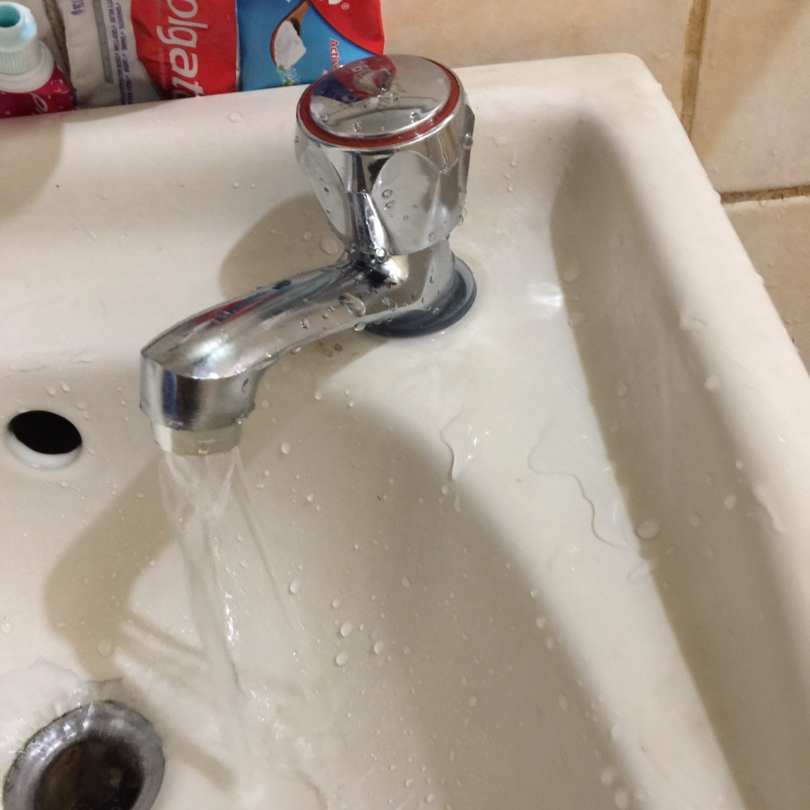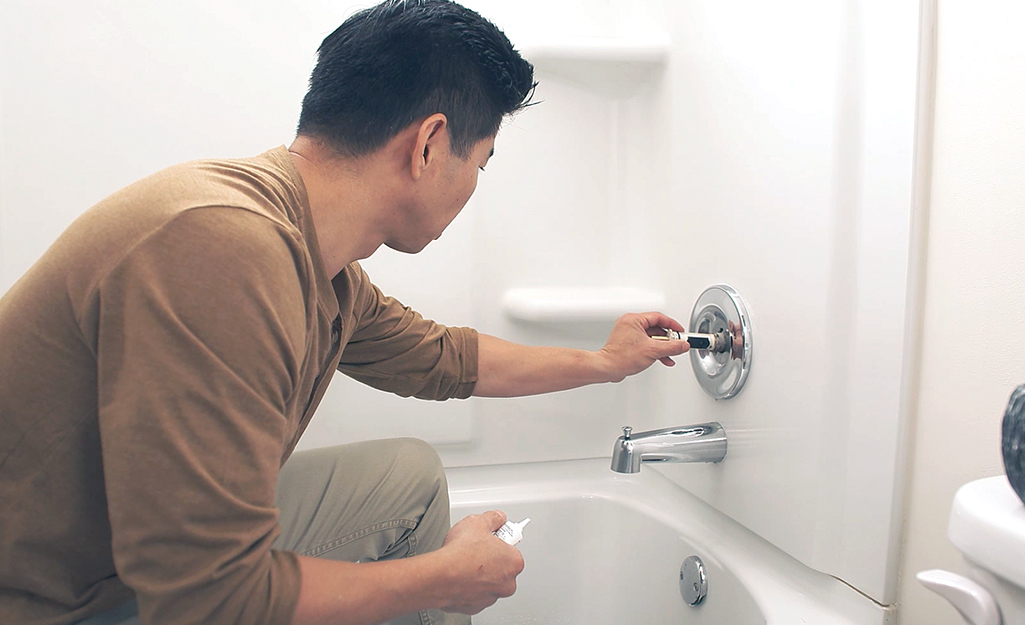Which It's Critical to Fix a Leaking Faucet
Which It's Critical to Fix a Leaking Faucet
Blog Article
We've found this article about Why Are My Faucets Dripping (And Can I Fix It Myself)? below on the net and reckoned it made sense to share it with you on my blog.

Dripping faucets could seem like a small hassle, however their influence goes beyond just the nuisance of the audio. From wasting water to incurring unnecessary economic prices and health risks, disregarding a leaking tap can lead to various repercussions. In this short article, we'll explore why it's vital to resolve this typical family issue quickly and effectively.
Waste of Water
Ecological Impact
Dripping taps add considerably to water wastefulness. According to the Environmental Protection Agency (EPA), a solitary faucet dripping at one drip per second can waste more than 3,000 gallons of water per year. This not only stress water sources yet also affects environments and wild animals depending on them.
Financial Prices
Increased Water Bills
Past the ecological influence, trickling taps can blow up water costs considerably. The gathered wastefulness gradually equates into higher energy expenditures, which can have been prevented with timely repair work.
Potential Home Damage
In addition, long term leaking can lead to damage to components and surfaces surrounding the tap. Water accumulation can trigger staining, deterioration, and even architectural issues if left ignored, resulting in extra repair service prices.
Health and wellness Problems
Mold and Mold Development
The constant existence of dampness from a dripping faucet creates a perfect environment for mold and mildew growth. These fungis not just jeopardize indoor air quality yet likewise position health threats, especially for people with breathing problems or allergic reactions.
Waterborne Diseases
Stationary water in leaking faucets can come to be a breeding ground for bacteria and various other pathogens, boosting the risk of waterborne diseases. Impurities such as Legionella microorganisms flourish in stationary water, possibly resulting in major health problems when consumed or breathed in.
Do it yourself vs. Specialist Repair
Advantages and disadvantages of Do It Yourself Repair
While some might attempt to take care of a trickling faucet themselves, do it yourself repair services feature their own set of difficulties. Without correct knowledge and devices, do it yourself attempts can aggravate the issue or lead to incomplete repair work, lengthening the trouble.
Benefits of Employing a Professional Plumber
Hiring an expert plumber guarantees that the underlying reason for the trickling tap is addressed efficiently. Plumbings have the competence and equipment to identify and repair faucet issues effectively, conserving time and lessening the threat of additional damages.
Step-by-Step Overview to Fixing a Dripping Faucet
Tools Called for
Prior to attempting to fix a trickling tap, collect the required devices, including an adjustable wrench, screwdrivers, substitute parts (such as washing machines or cartridges), and plumber's tape.
Common Tap Issues and Their Solutions
Recognize the kind of tap and the certain issue causing the drip. Common troubles include damaged washing machines, corroded shutoff seats, or defective O-rings. Refer to producer directions or on-line tutorials for step-by-step assistance on fixings.
Safety nets
Normal Maintenance Tips
To avoid dripping faucets, do regular maintenance such as cleaning aerators, checking for leakages, and changing worn-out components quickly. Furthermore, think about setting up water-saving devices or updating to a lot more efficient fixtures.
Value of Prompt Repairs
Addressing trickling faucets as quickly as they're noticed stops additional water wastefulness and possible damages, eventually conserving both water and cash in the long run.
Impact on Residential Property Worth
Understanding of Well-Maintained Property
Preserving a property in good condition, including dealing with maintenance problems like dripping faucets, enhances its perceived worth and desirability among possible customers or renters.
Impact on Resale Value
Residences with well-kept plumbing fixtures, including faucets, command greater resale values in the property market. Attending to leaking taps can contribute to a positive impression throughout residential property assessments and settlements.
Ecological Responsibility
Specific Payment to Preservation
Taking responsibility for dealing with dripping faucets straightens with more comprehensive efforts toward water conservation and ecological sustainability. Every individual's actions collectively make a considerable influence on maintaining precious resources.
Sustainable Living Practices
By prioritizing prompt repair work and embracing water-saving routines, people add to sustainable living methods that benefit both existing and future generations.
Final thought
Addressing a dripping faucet exceeds simple comfort; it's a crucial step toward preserving water, minimizing financial costs, and guarding health and residential or commercial property. Whether through DIY repairs or specialist assistance, doing something about it to fix trickling faucets is a little yet impactful way to promote liable stewardship of resources and contribute to a healthier, more lasting future.
How to Fix a Dripping or Leaky Faucet
A leaking faucet is one of the most common problems that homeowners encounter, but it being commonplace doesn’t make it any less annoying. The constant drip drip drip of a leaking bathtub faucet, showerhead, or sink tap can disturb your home’s serenity. Left neglected, a dripping faucet can also result in higher water bills and discoloration or mold growth in your sink or plumbing fixtures.
Fortunately, you don’t have to be a trained plumber to know how to stop a dripping faucet. With some basic tools, replacement parts, and a little patience, leaky faucet repair is a breeze. In this article, we’ll explain what causes dripping faucets and how you can fix them.
What Causes a Leaking Faucet?
Kitchen and bathroom faucets come in all manner of designs, but most involve some combination of valves, O-rings, seals, and washers. The O-ring is usually the weakest link, but any one of these pieces can wear down over time. Heat, moisture, temperature fluctuations, minerals, mold, and movement can contribute to warping and corrosion, breaking the watertight seal. This just comes with the territory of being a homeowner. Everything is always subject to wear and tear, and some component parts of your appliances and fixtures need to be replaced on occasion. At least replacement O-rings are cheap!
More rarely, dripping faucets can be a symptom of excessively high water pressure. Were this the case in your home, you would probably notice that the leak is not isolated to one faucet. Water pressure issues are harder to resolve on your own. We recommend contacting a professional plumber if you suspect your water pressure is too high.
How to Fix a Dripping Faucet
Pipe wrench or monkey wrench Allen wrench set Screwdrivers Old towel or rag Shut off the water.
Before you do anything, you need to turn off the water to keep from drenching your kitchen or bathroom. You should find a valve under the sink and against the wall. Once you’ve turned this valve, try turning the faucet on to confirm that the water source has been cut off.
If you can’t locate your local valve for the faucet you’re working on, you can always shut off the water to the house at the main valve. Of course, this will prohibit anyone from using the sinks, showers, or toilets while you’re working on the faucet that’s giving you trouble.
Plug or block the drain.
You’ll be disassembling the faucet and removing some small bits of hardware. Plug the drain with a stopper or rag to avoid the possibility of a small screw falling into your P-trap.
Take apart the faucet assembly.
There are several varieties of kitchen and bathroom faucets, each with its own manner of assembly. For detailed instructions on how to disassemble your faucet, you can refer to the fixture’s manual or contact the manufacturer. If you know whether you have a ball, disc, cartridge, or compression faucet, you can find detailed schematics online.
In general, you need to begin by removing the faucet handles. You might notice a small screw that you’ll need to remove with a screwdriver or Allen wrench. If you don’t see any visible securing hardware, it’s likely hidden under a decorative cap that can be unscrewed or popped off with flathead screwdriver.
Remove each piece methodically, consulting a schematic when necessary. Take notes or arrange the pieces in such a way to make it easier to correctly reassemble the faucet later.
Remove the cartridge.
Once you’ve removed the handles and securing hardware, you should be able to remove the valve cartridge or stem. Some cartridges will slide right out. Other faucet models will require you to loosen a nut with a pipe wrench before you can remove the valve stem.
Examine the exposed hardware.
With the cartridge or stem removed, inspect the component parts. Check the rubber O-rings for wear and tear. Also examine the seat washer for corrosion or other damage. These pieces are usually the responsible parties for a dripping faucet, but it’s worth inspecting the other component parts while you have the faucet disassembled.
Find replacement parts.
Once you’ve identified which faucet component has failed, find an identical replacement. Your local hardware store should have O-rings, seat washers, and other standard components in stock. If you have a luxury or uncommon faucet, you may have to contact the manufacturer for a replacement part.
It’s a good idea to take your old parts with you to the hardware store so you can compare them with the store’s inventory and be sure you’re purchasing the correct replacement.
Reassemble the faucet.
With your new parts in hand, reconstruct the faucet and handles. Don’t be tempted to overtighten screws or nuts. You might think this could create a better seal, but it can instead damage or bend a delicate part of the assembly and create a new problem for you.
Turn on the water and test the faucet.
The only thing left to do is test your work. Unplug the sink, turn the water back on, and try the faucet. Congratulate yourself on a job well done!
https://www.libertyhomeguard.com/how-to-fix-a-dripping-or-leaky-faucet/

Hopefully you liked our topic about Why Is It Important To Fix Your Leaking Tap/Faucet?. Thanks a ton for finding the time to read through our article. Loved our content? Please share it. Help other people locate it. Thanks a lot for being here. Don't hesitate to check up our site back soon.
Report this page